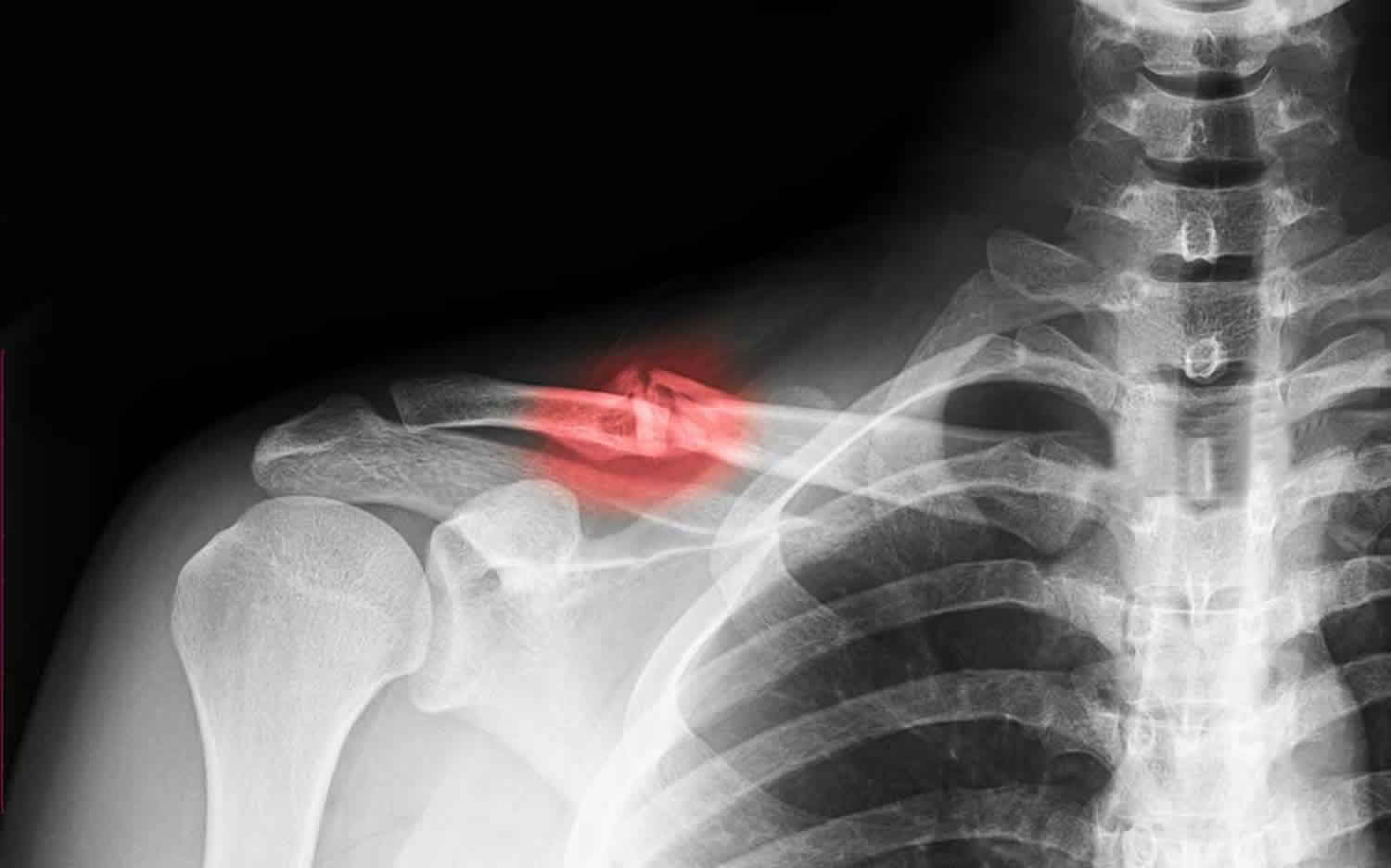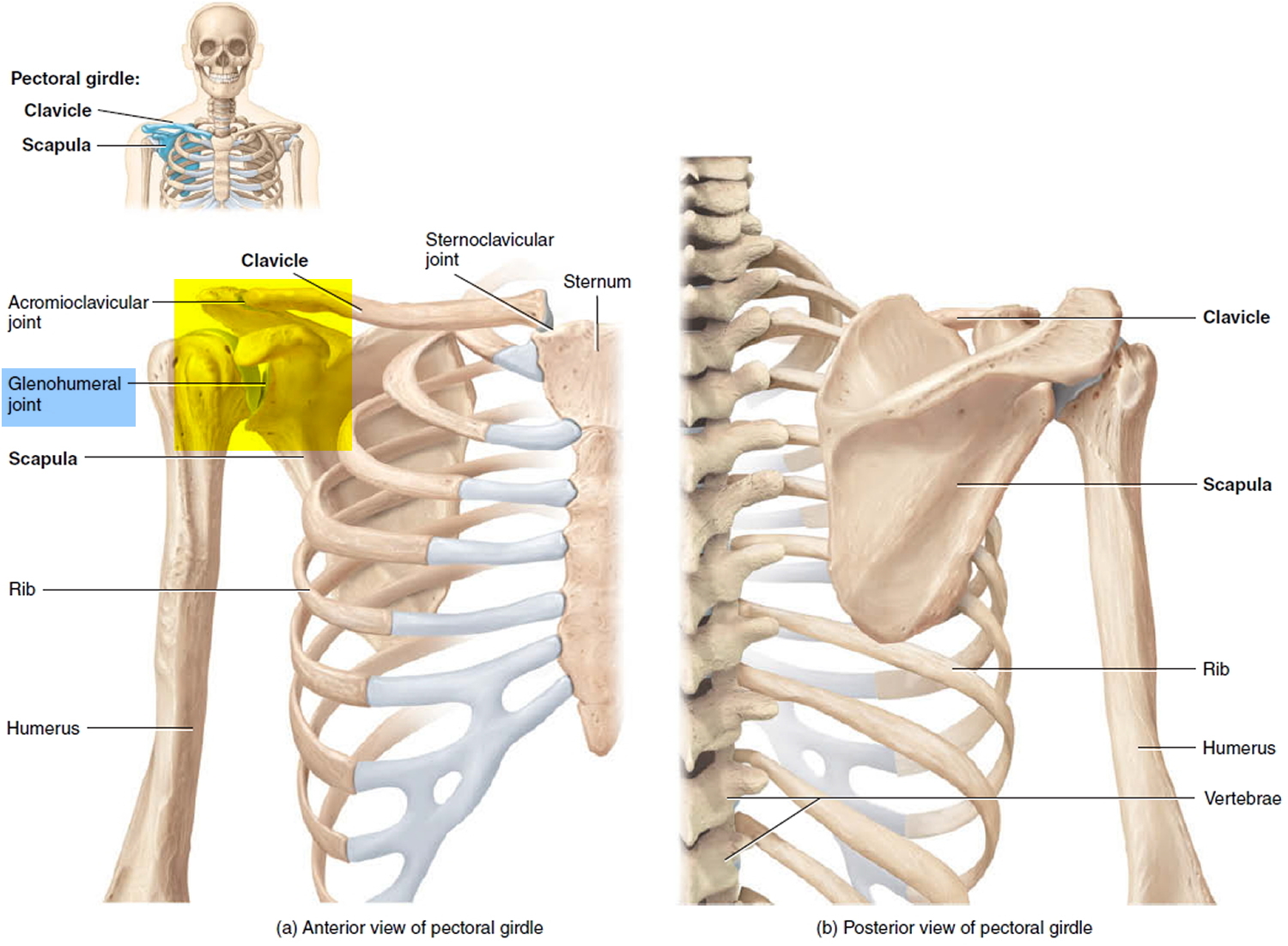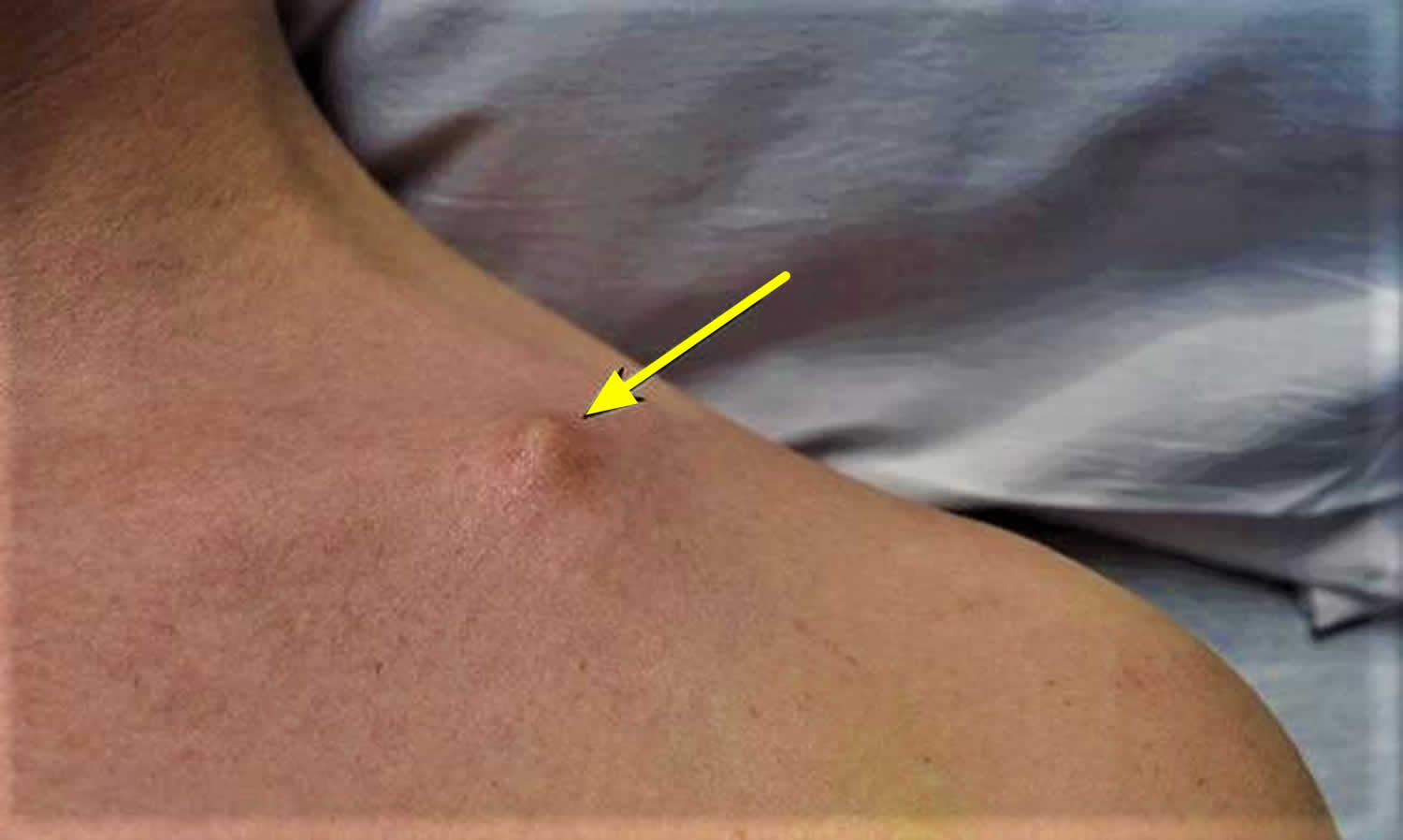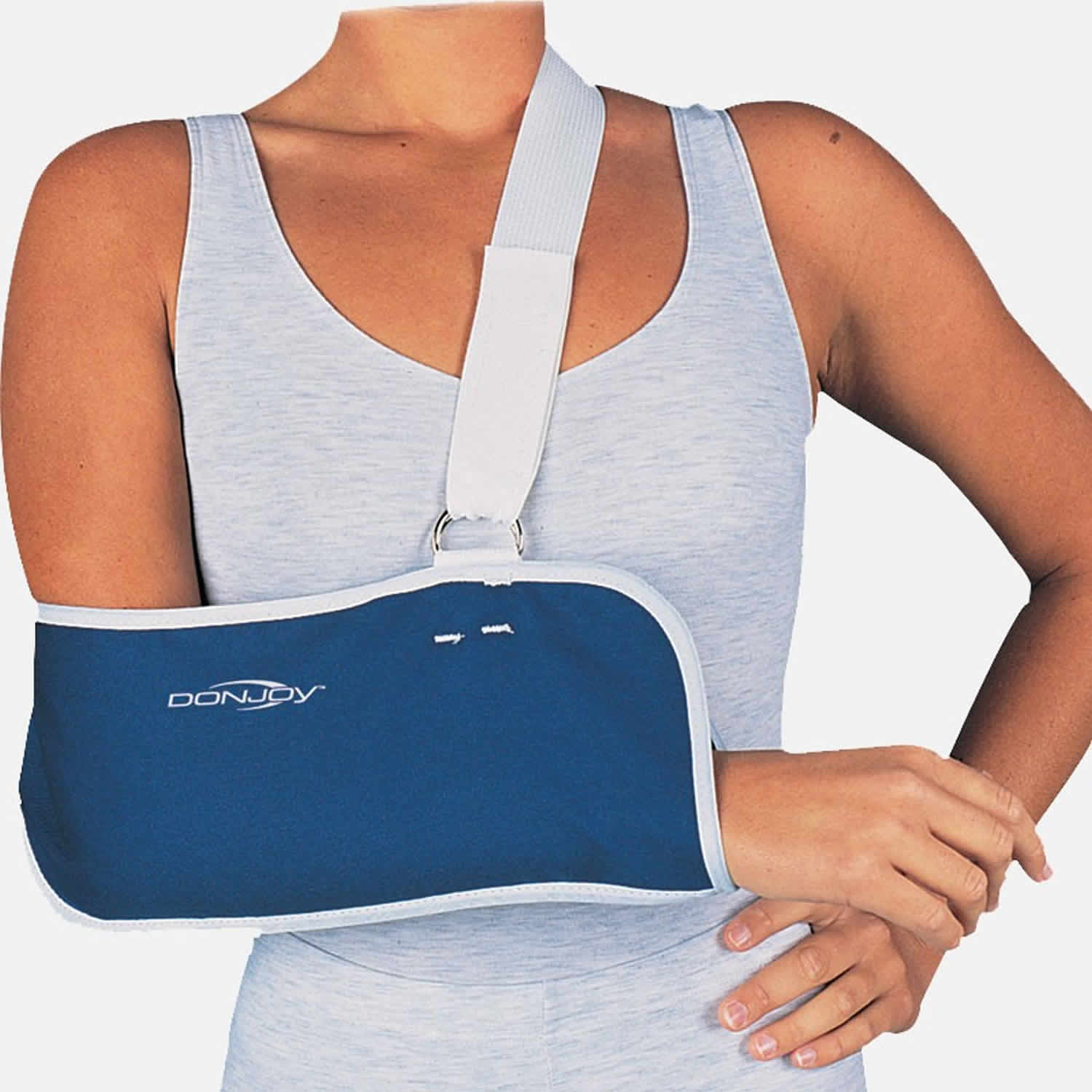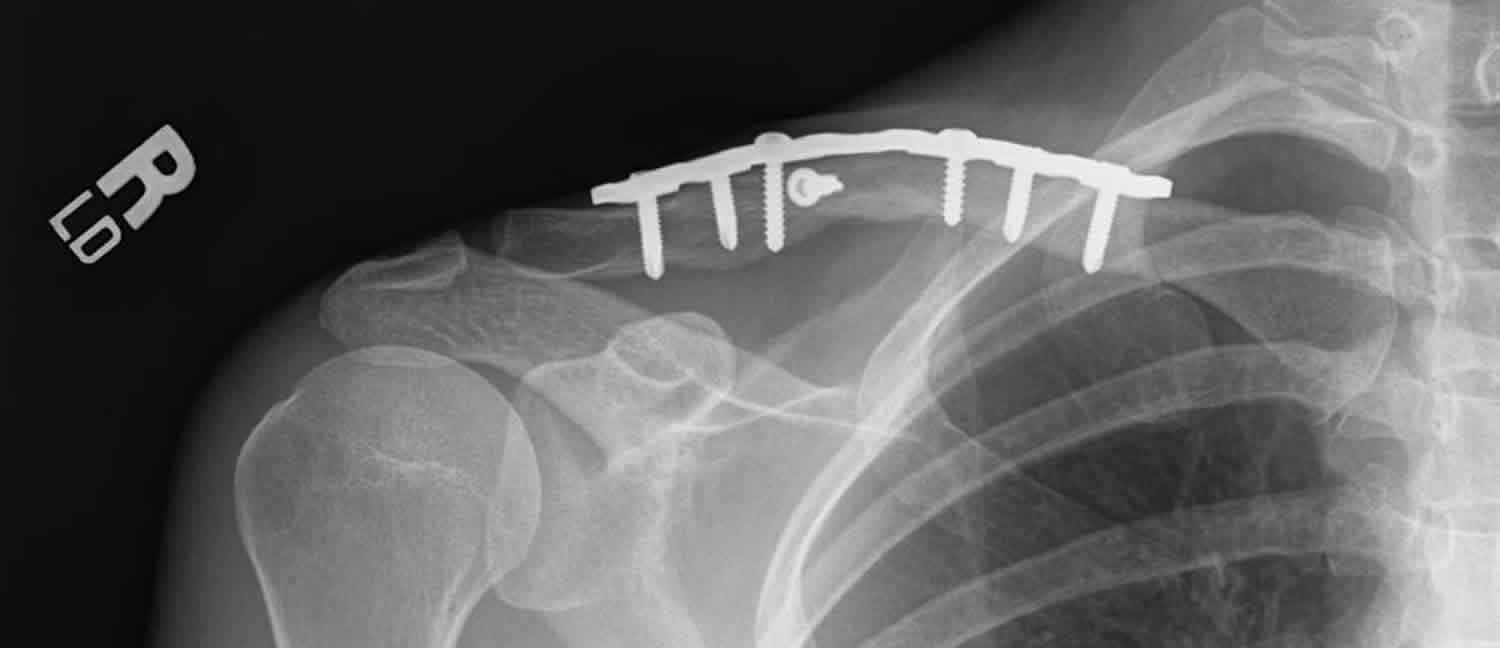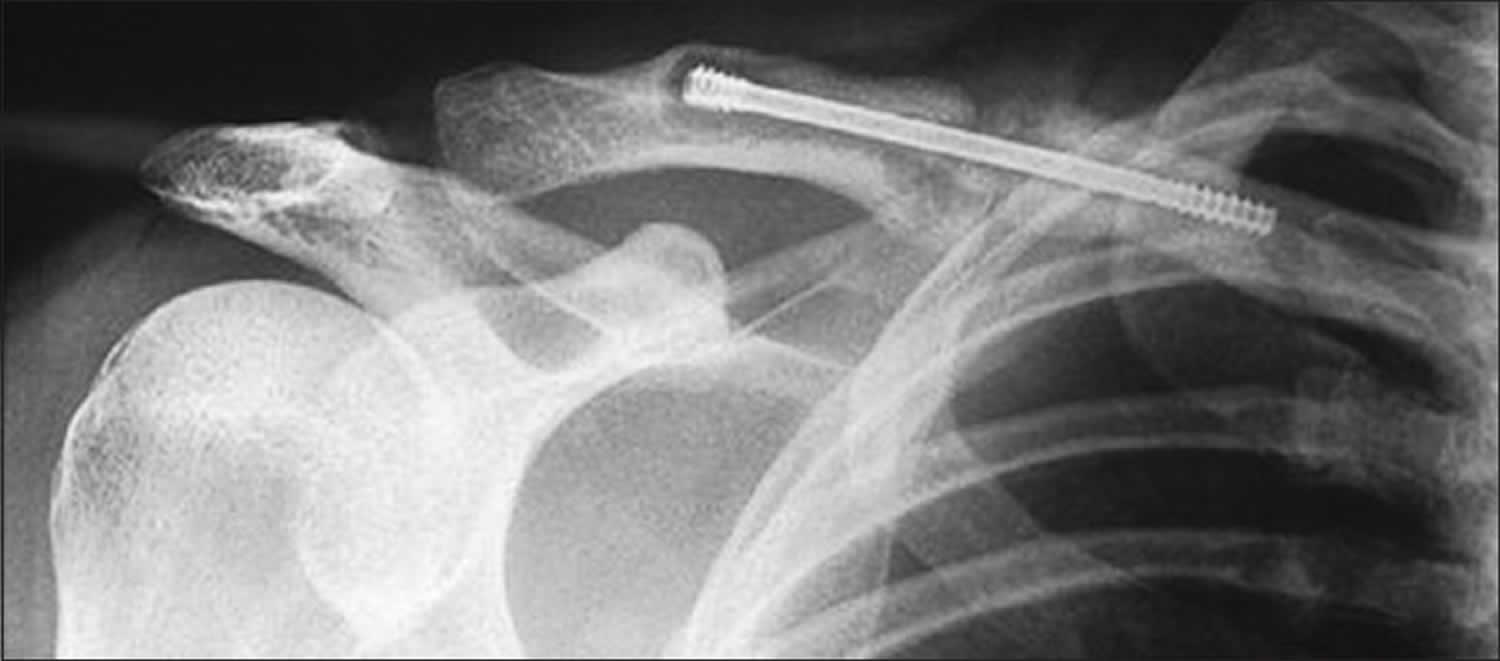Contents
Broken collarbone
A broken collarbone also known as clavicle fracture, is a break in the collarbone (the clavicle), one of the main bones in your shoulder. A broken collarbone or clavicle fracture, is fairly common—accounting for about 5 percent of all adult fractures. Most clavicle fractures occur when a fall onto the shoulder or an outstretched arm puts enough pressure on the bone that it snaps or breaks. A broken collarbone can be very painful and can make it hard to move your arm.
While waiting to see a doctor, stabilize your arm using a towel as a sling – this goes under the forearm and then around the neck. Try to move your arm as little as possible.
Over-the-counter painkillers, such as acetaminophen or ibuprofen, can help reduce the pain. Don’t give aspirin to children under the age of 16.
Holding an ice pack to the injured area can also help reduce the pain and swelling. A bag of frozen peas wrapped in a tea towel works well. Avoid applying ice directly to the skin because it can burn.
Clavicle fractures are fairly common and occur in people of all ages. Most fractures occur in the middle portion, or shaft, of the bone. Occasionally, the bone will break where it attaches at the ribcage or shoulder blade.
Clavicle fractures vary. The bone can crack just slightly or break into many pieces (comminuted fracture). The broken pieces of bone may line up straight or may be far out of place (displaced fracture).
Most clavicle fractures can be treated by wearing a sling to keep the arm and shoulder from moving while the bone heals. With some clavicle fractures, however, the pieces of collarbone move far out of place when the injury occurs. For these more complicated clavicle fractures, surgery may be needed to realign the collarbone.
Figure 1. Clavicle fracture
Collarbone Anatomy
The clavicle is located between the ribcage (sternum) and the shoulder blade (scapula). It is the bone that connects the arm to the body.
The clavicle lies above several important nerves and blood vessels. However, these vital structures are rarely injured when a fracture occurs.
Figure 2. Shoulder girdle (pectoral girdle)
Broken collarbone causes
Clavicle fractures are most often caused by a direct blow to the shoulder. This can happen during a fall onto the shoulder or a car collision. A fall onto an outstretched arm can also cause a clavicle fracture. In a baby, a clavicle fracture can occur during the passage through the birth canal.
Broken collarbone signs and symptoms
A clavicle fracture can be very painful and may make it hard to move your arm. Other signs and symptoms of a broken collarbone may include:
- Sagging of the shoulder downward and forward under the weight of the arm, as the broken collarbone is no longer providing support.
- Inability to lift the arm because of pain
- A grinding sensation or snapping noise when you try to raise the arm
- A deformity or “bump” over the break
- Bruising, swelling, and/or tenderness over the collarbone
- Bleeding if the bone has damaged the tissue and skin, also called a ‘compound fracture’ (this is rare)
- Numbness or pins and needles if nerves in the arm are injured
Figure 3. Sign of a broken collarbone (the broken ends of the bone may cause tenting of the skin or “bump” over the fracture site)
Broken collarbone diagnosis
Physical Examination
Your doctor will want to know how the injury occurred and will ask about your symptoms. He or she will then carefully examine your shoulder.
In a clavicle fracture, there is usually an obvious deformity, or “bump,” at the fracture site. Gentle pressure over the break will bring about pain. Although it is rare for a bone fragment to break through the skin, it may push the skin into a “tent” formation.
Your doctor will also perform tests to ensure that no nerves or blood vessels were damaged when the fracture occurred.
Imaging Studies
X-rays. X-rays provide images of dense structures, such as bone. Your doctor will order an x-ray to help pinpoint the location of the fracture and to learn more about the severity of the break.
He or she may also order x-rays of your entire shoulder to check for additional injuries. If other bones are broken, your doctor may order a computerized tomography (CT) scan to see the fractures in better detail.
Figure 4. Distal clavicle fracture (note how far out of place (displaced) the broken ends of the bone are)
Broken collarbone treatment
Nonsurgical treatment
If the broken ends of the collarbone have not significantly shifted out of place, you may not need surgery. Most broken collarbones can heal without surgery.
Nonsurgical treatment may include:
- Arm support. A simple arm sling is usually used for comfort immediately after the break and to keep your arm and shoulder in position while the injury heals. The arm sling is usually fitted in hospital after an X-ray has confirmed the collarbone is broken and have not significantly shifted out of place.
- Medication. Pain medication, including acetaminophen, can help relieve pain as the fracture heals.
- Physical therapy. Although there will be some pain, it is important to maintain arm motion to prevent stiffness. Often, patients will begin doing exercises for elbow motion immediately after the injury.
After a clavicle fracture, it is common to lose some shoulder and arm strength. Once the bone begins to heal, your pain will decrease and your doctor may start gentle shoulder exercises. These exercises will help prevent stiffness and weakness. More strenuous exercises will be started gradually once the fracture is completely healed.
Figure 5. Broken collarbone arm sling
Follow-up care
You will need to see your doctor regularly until your clavicle fracture heals. During these visits, he or will take x-rays to make sure the collarbone is healing in a good position. After the collarbone has healed, you will be able to gradually return to your normal activities.
Complications
In some cases, a clavicle fracture can move out of place before it heals. It is important to follow up with your doctor as scheduled to make sure the collarbone stays in position.
If the clavicle fracture fragments do move out of place and the bones heal in that position, it is called a “malunion”. Treatment for this is determined by how far out of place the bones are and how much this affects your arm movement.
A large bump over the fracture site may develop as the fracture heals. This usually gets smaller over time, but a small bump may remain permanently.
Broken collarbone surgery
Surgery under a general anaesthetic is only needed if the injury is severe. If the broken ends of the bones have significantly shifted out of place or where the bone has broken through the skin (compound fracture), your doctor will recommend surgery.
Surgery typically involves putting the broken pieces of bone back into position and preventing them from moving out of place until they are healed. This can improve shoulder strength when you have recovered.
Open reduction and internal fixation. This is the procedure most often used to treat clavicle fractures. During the procedure, the bone fragments are first repositioned (reduced) into their normal alignment. The pieces of bone are then held in place with special metal hardware.
Common methods of internal fixation include:
- Plates and screws. After being repositioned into their normal alignment, the bone fragments are held in place with special screws and metal plates attached to the outer surface of the bone.
After surgery, you may notice a small patch of numb skin below the incision. This numbness will become less noticeable with time. Because the clavicle lies directly under the skin, you may be able to feel the plate through your skin.
Plates and screws are not routinely removed after the bone has healed, unless they are causing discomfort. Problems with the hardware are not common, but some patients find that seatbelts and backpacks can irritate the collarbone area. If this happens, the hardware can be removed after the fracture has healed.
Figure 6. Broken collarbone plates and screws
- Pins or screws. Pins or screws can also be used to hold the fracture in good position after the bone ends have been put back in place. The incisions for pin or screw placement are usually smaller than those used for plates.
Pins or screws often irritate the skin where they have been inserted and are usually removed once the fracture has healed.
Figure 7. Broken collarbone screw
Pain management
After surgery, you will feel some pain.This is a natural part of the healing process. Many patients find that using ice and simple, non-prescription medications for pain relief are all that is needed to relieve pain.
If your pain is severe, your doctor may suggest a prescription-strength medication, such as an opioid, for a few days.
Be aware that although opioids help relieve pain after surgery, they are a narcotic and can be addictive. Opioid dependency and overdose has become a critical public health issue. For this reason, opioids are typically prescribed for a short period of time. It is important to use opioids only as directed by your doctor. As soon as your pain begins to improve, stop taking opioids.
Rehabilitation
Specific exercises will help restore movement and strengthen your shoulder. Your doctor may provide you with a home therapy plan or suggest that you work with a physical therapist.
Therapy programs typically start with gentle motion exercises. Your doctor will gradually add strengthening exercises to your program as your fracture heals.
Although it is a slow process, following your physical therapy plan is an important factor in returning to all the activities you enjoy.
Complications
There are risks associated with any type of surgery. These include:
- Infection
- Bleeding
- Problems with wound healing
- Pain
- Blood clots
- Damage to blood vessels or nerves
- Reaction to anesthesia
Risks that are specific to surgery for clavicle fractures include:
- Difficulty with bone healing
- Lung injury
- Hardware irritation
Patients who smoke or use tobacco products, have diabetes, or are elderly are at a higher risk for complications both during and after surgery. They are also more likely to have problems with wound and bone healing.
Before your surgery, your doctor will discuss each of the risks with you and will take specific measures to avoid complications.
Broken collarbone recovery time
Whether your treatment involves surgery or not, it can take several months for your collarbone to heal. Healing may take longer in diabetics or in people who smoke or use tobacco products.
- In adults, it usually takes about 6-8 weeks for a broken collarbone to heal, although it can take longer. In children, it usually takes about 3-6 weeks to heal. However, it will take at least the same period again to restore full strength to your shoulder.
- While the fracture heals, a lump may develop along your collarbone. This is normal, and often improves over the following months.
Occasionally, the fracture doesn’t heal (non-union) and you may need surgery. This should be discussed with your surgeon.
Most people return to their regular activities within 3 months of their injury. Your doctor will tell you when your injury is stable enough to do so. Returning to regular activities or lifting with your arm before your doctor advises may cause the fracture fragments to move or the hardware to break. This may require you to start your treatment from the beginning.
Once your fracture has completely healed, you can safely return to sports activities.
Broken collarbone recovery advice
You may find the following advice helpful while recovering from a broken collarbone:
- use extra pillows at night to keep yourself more upright if you find sleeping uncomfortable
- use ice packs and painkillers if pain and swelling continues while your arm is in a sling
- move your elbow, hand and fingers regularly as soon as it’s comfortable to do so
- when you think the fracture has started to heal, remove the sling for short periods of time if it isn’t too painful
- don’t play contact sports for at least 10-12 weeks after the injury – your doctor will tell you when you can go back to work and resume normal activities
